In recent weeks, you traveled to Philippines with me. Would you continue our trip? I bring you this time, 10 minutes by bike from my home: to the National Museum of Singapore.
Singaporeans are known for their love for food. Moreover, taxi drivers often ask you two questions: how much do you pay for your rent or do you like food in Singapore? They are very proud of their gastronomic culture.
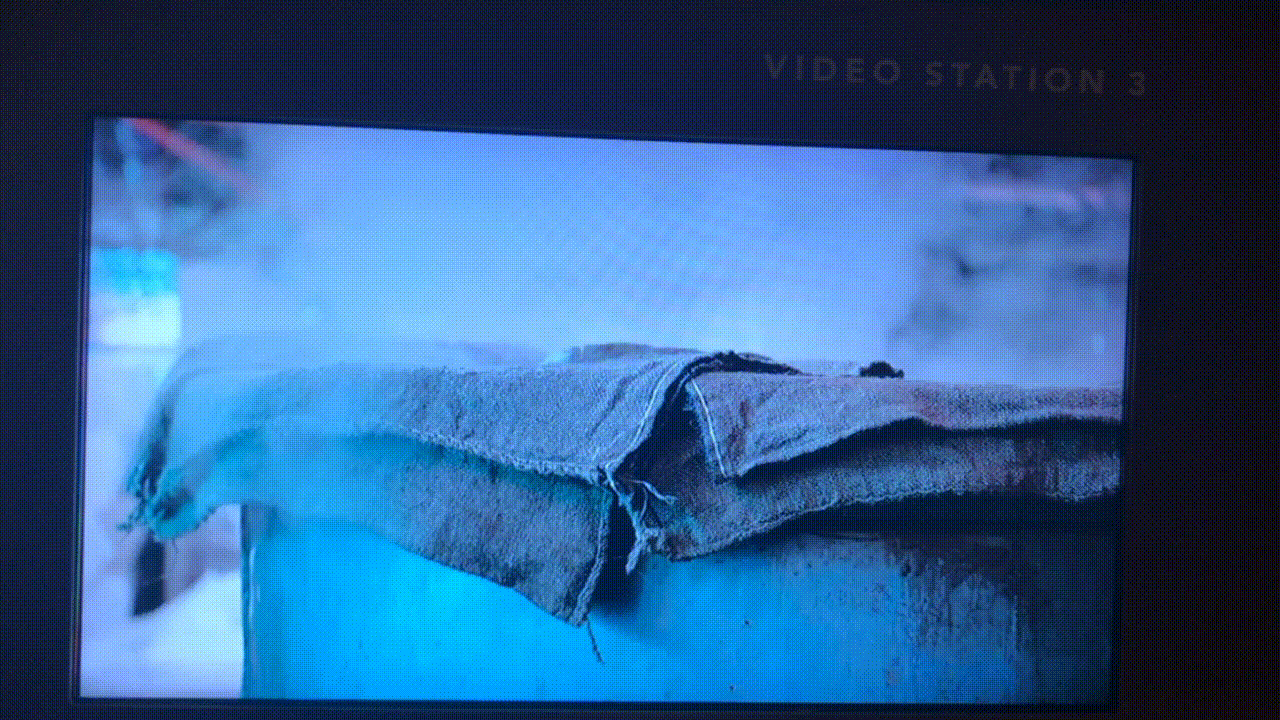
So much so that the city send its request last March for entering in the inheritance of UNESCO with the culture of the hawker centers (emblem of the Street Food here).
There is any surprise then that the National Museum of Singapore is devoting an exhibition about the history of food packaging in the 20th century until September 15th. The original title is Packaging Matters – Singapore’s food packaging story from the early 20th century.
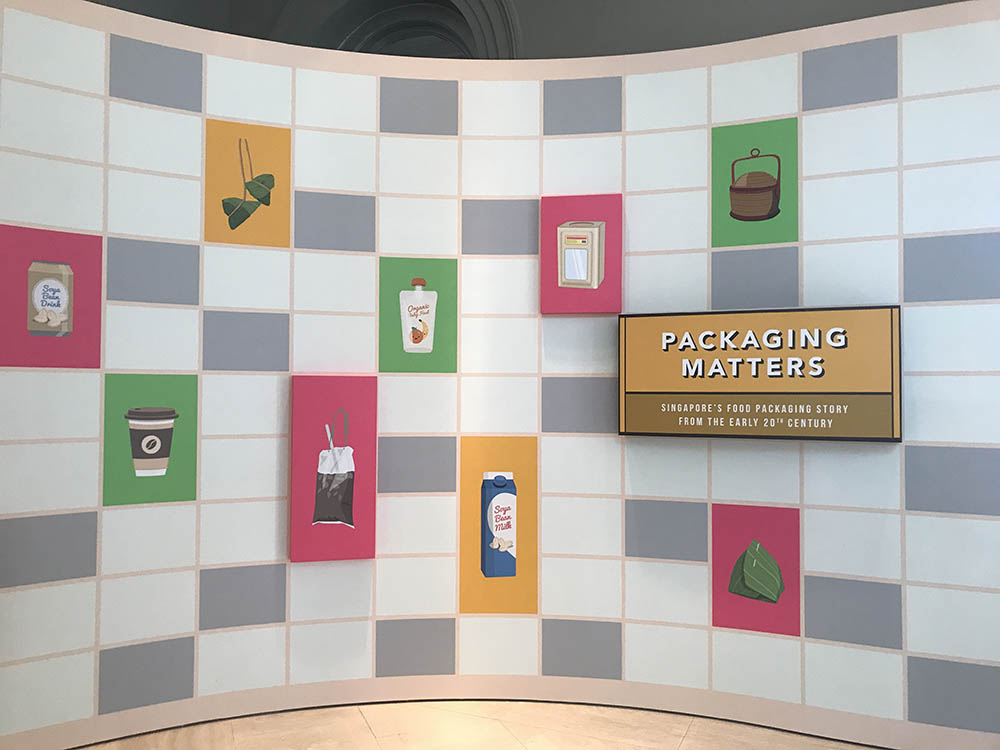
Packaging again! Yes, as in London with the Museum of Brands on which I wrote an article. Now that you know my love for this aspect of marketing, you know I couldn’t miss the Singaporean exhibition. I summarize my visit with some pics.
The beginnings of packaging
I remind you that the Independent Republic of Singapore is very young. It is only 54 years old. Before the Singapore we know today, the British Empire dominated the country for a century and a half. The exhibition begins in this context.
During this period, agriculture and plantations are important. And this industry does not always have the best auspices. Between climate, harmful insects, poor harvests, lack in terms of local ecology: cultivating is not easy.
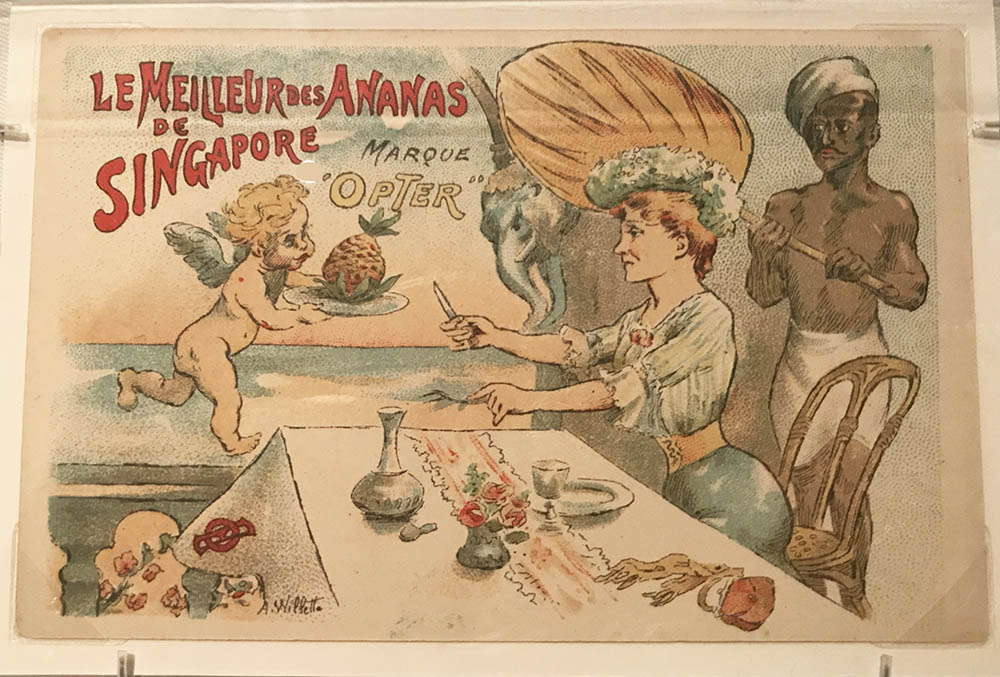
Conservation techniques such as tin cans were developed at this moment. A new industry was born. Obviously, the “marketing” has emerged, too. By the way, pineapples cans form Singapore were highly appreciated internationally and in UK.
Packaging Design
The first packagings and labels are drawn. They reflect the colonial era even in their subjects. On the other hand, from the beginning of the 20th century, local identity asserts itself. Local families hold the factories. Metal boxes, bottles, paper boxes and other packaging are produced in Singapore.
These packagings represent a food industry becoming stronger and stronger. The collaboration with multinationals are regular while maintaining the production of many local products. In the years 1960-70, the climax will take place.
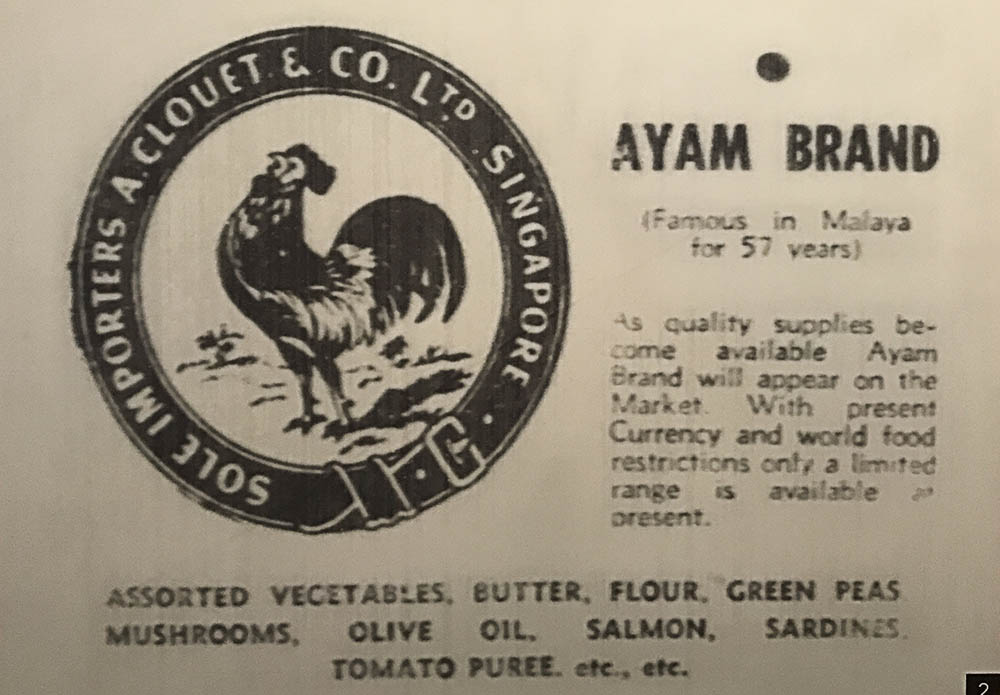
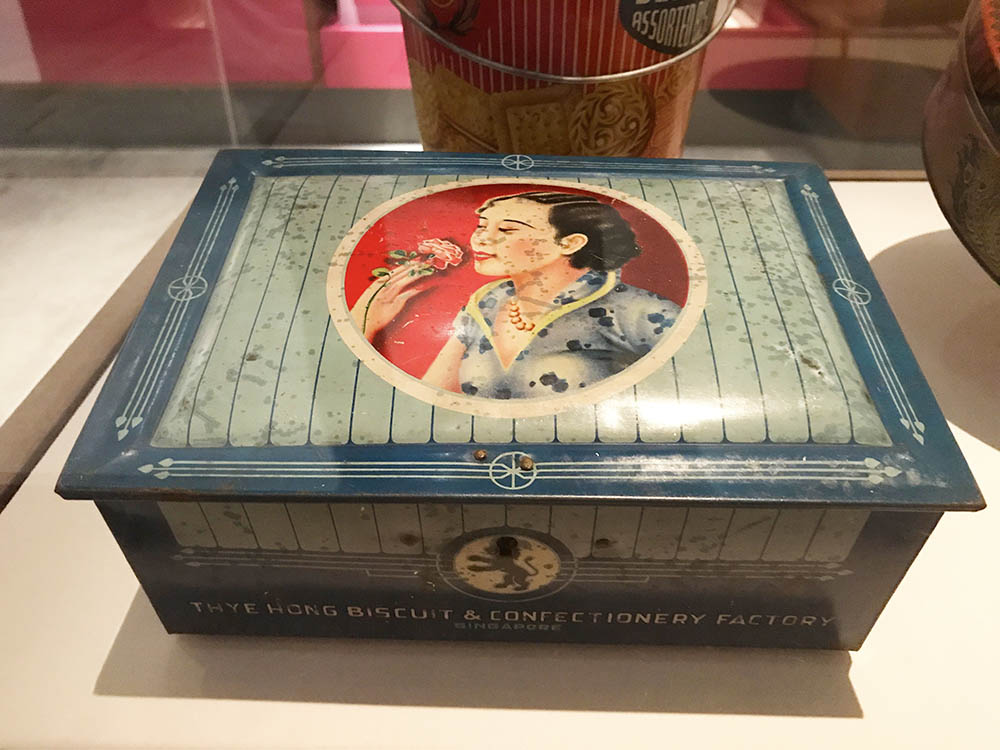
At the same time, packaging becomes more “local” and more and more realistic. The containers are real advertising vectors. Logos, fonts, photos, colors, design and graphic identities of very popular brands are developed. Some of them are still present today.
The text is also increasingly present through slogans or nutritional information. The packaging reflects social distinctions such as class, gender or ethnicity. Packaging becomes a channel of communication, but also a reflection of Singapore’s popular culture.
At the same time, the recovery of metal boxes are common. They become caskets to accommodate other objects. Their use is also altogether diverted: a metal box with holes can become a steam cooker.
Some resistance to Coca Cola
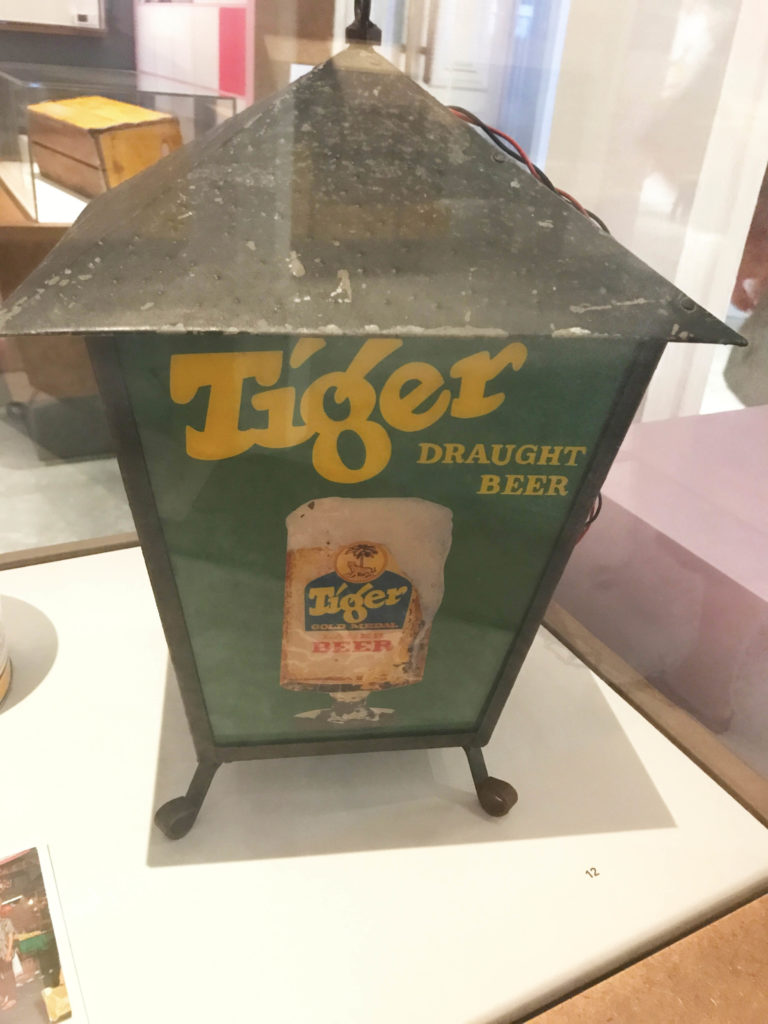
The exhibition, which includes videos and and sounds, presents a very interesting fact. Vernon Cornelius, a figure in the Western music local scene, says that despite a marketing already ripe in the West, the preference of the people goes to local products, especially for drinks.
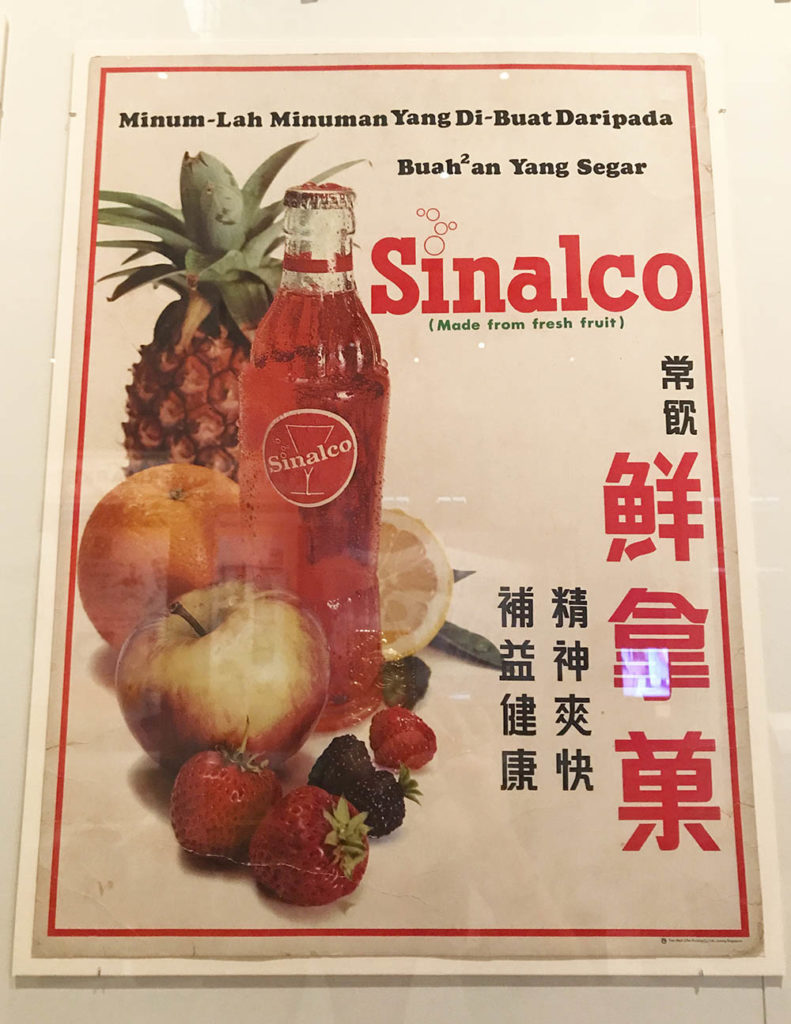
Coca Cola and Pepsi are not number one. The reasons? First, the packaging! The bottles are smaller while the price is higher. Local companies offer larger bottles for a lower price. In addition, Singaporeans consider Coca Cola too highly carbonated and appreciate it less.
On the other hand, I did not dream, I saw a poster of Sinalco. This drink, created by a German, will become Swiss in 1981 (Sinalco, not its creator) … Suddenly, I fell back into childhood. It was just a little thought for my country🐮.
Natural Packaging
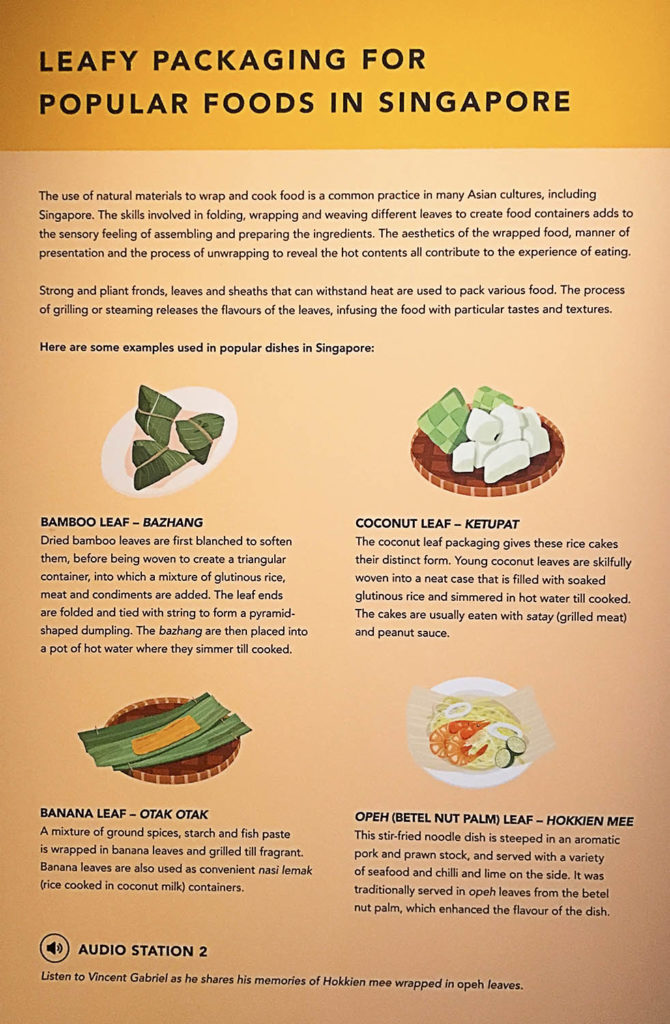
A very (too!) short section pays tribute to natural packaging, those made of leaves. These are certainly the most traditional and the most eco-friendly of the whole exhibition.
This practice is common to many Asian countries and still exists. It is not uncommon to find small triangles of bamboo leaves wrapping a delicious local dish at gas stations or other small shops.
It’s not only a packaging, but in addition, it gives a different taste to the dishes it contains depending on whether the cooking was done with steam or grill or, depending on the variety of leaves chosen : bamboo, coconut, banana or betel leaves.
Since I am talking about natural packaging, the last part of the exhibition covers the great challenge of recycling. Good advice and figures are presented to encourage the public to become aware of the importance of recycling or limiting the use of plastic packaging. This gives hope despite Singapore’s refusal to ban plastic bags last year .
Discover a country and a culture through packaging
If the noodle dishes reflect a multi-ethnicity depending on their preparation or composition as the exhibition explains, packaging also contribute.
As Vincent Gabriel, a teacher, author and consultant for the food industry in the 1960s, says: “In terms of food, we are all equal”.
Singapore is a good example of this fact because of the number of cultures coexisting on the island.
This exhibition is an original way to discover the history of Singapore. So if you stop on the island during your holidays, go to the National Museum.
The exhibition is free, can be visited in family, since it is not very long. A small booklet with games for children should help them not to be bored.
Enjoy your visit!
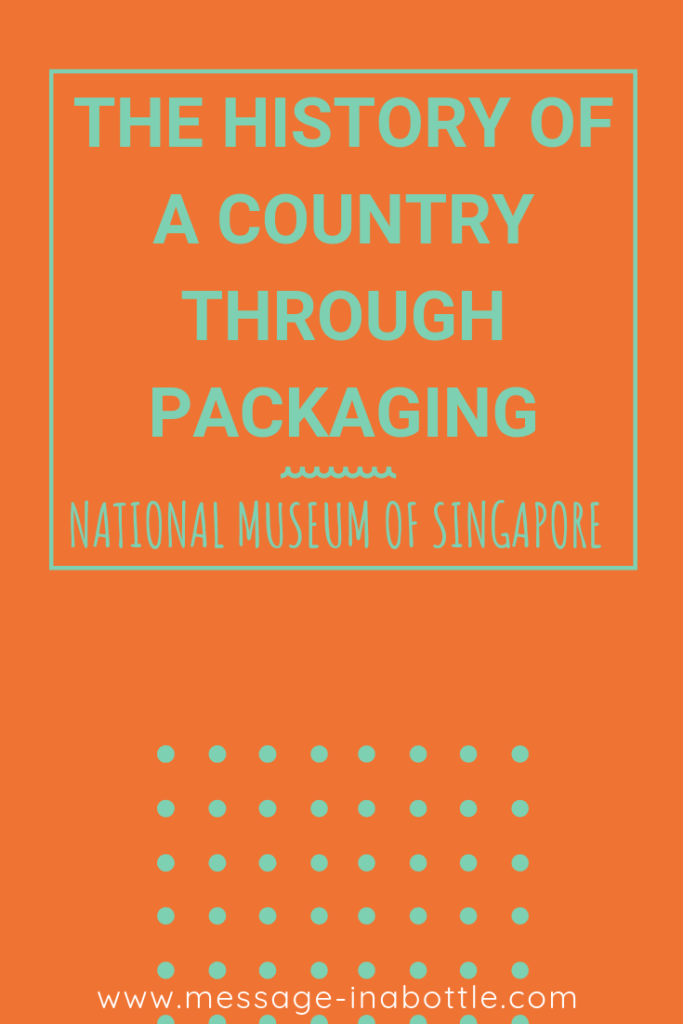
par Delphine Berclaz
